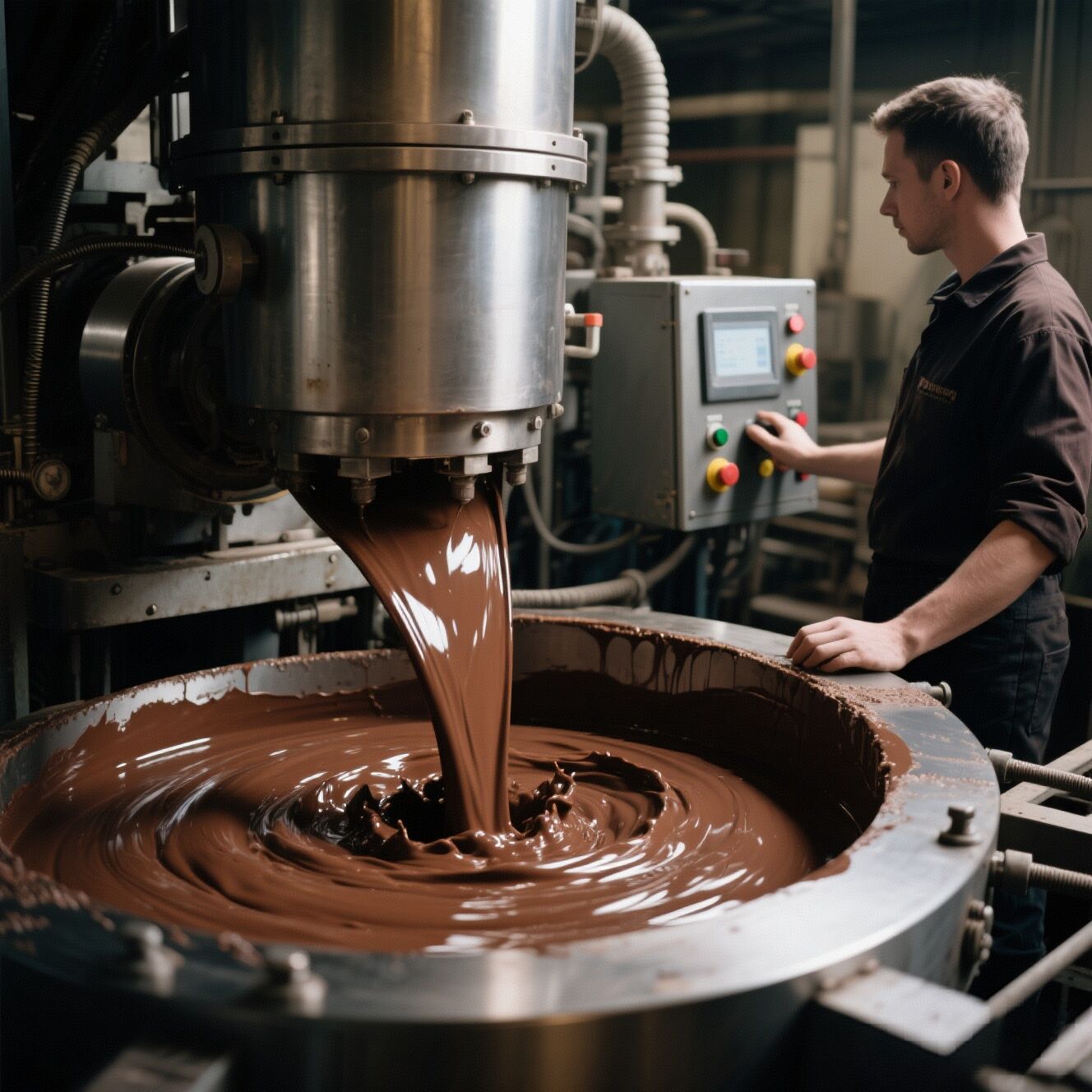The chocolate making process is a complex process from raw materials to finished products. The core steps mainly include the following aspects:
1. Raw material preparation
The main raw material is cocoa beans, which need to be screened first to remove impurities and inferior beans.
The variety of cocoa beans (such as Criollo, Forastero, etc.) will directly affect the flavor of chocolate.
2. Baking
The cocoa beans are roasted (temperature is about 120-150℃) to stimulate the aroma, while removing moisture and separating the bean shell from the bean kernel.
The baking time and temperature are adjusted according to the cocoa bean variety and desired flavor.
3. Shelling and cracking
After the roasted cocoa beans are cooled, the hard shell is removed by machine to obtain cocoa nibs.
The cocoa nibs are broken into smaller particles for subsequent grinding.
4. Grinding
The broken cocoa nibs are ground into fine cocoa mass in the grinder, releasing cocoa butter in the process to form a viscous liquid.
The fineness of grinding affects the taste of chocolate. The finer the chocolate, the smoother it tastes.
5. Mixing
Add sugar, milk powder (to make milk chocolate), cocoa butter (to adjust hardness) and other raw materials according to taste requirements and mix them evenly.
White chocolate does not contain cocoa liquid blocks and is mainly made of cocoa butter, sugar and milk powder.
6. Refining
The mixed materials are further ground in the refiner to make the particles finer (usually less than 20 microns), while making the flavor more integrated and the texture smoother.
7. Tempering
This is a key step. By precisely controlling the temperature change of the material (heating until it melts and then gradually cooling it down), the cocoa butter forms a stable crystal structure.
Tempering determines the gloss, crispness and melting resistance of chocolate. Improper handling will cause the surface to turn white and the texture to become soft.
8. Molding
The tempered chocolate liquid is injected into the mold, vibrated to remove bubbles, and demolded after cooling and solidification to obtain chocolate products of various shapes.
After these steps, cocoa beans finally become the chocolate we are familiar with. Adjustments to different process details will create vastly different flavors and tastes.

Post time:2025-07-11
